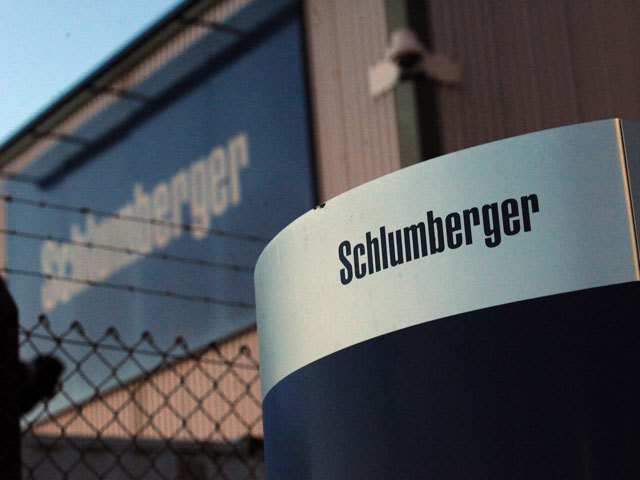
Schlumberger’s chairman and CEO, Paal Kibsgaard, is predicting a “multi-year” up-cycle starting this year and warns that spare production capacity is now wafer thin.
However, he expects that with current oil price levels, 2017 will become the third successive year of lower capex spend which will, in turn, further weaken the state of the international production base.
Speaking on the back of this most ubiquitous oilfield services major’s latest financials, Kibsgaard said at an earnings conference call on January 20 that the gap between supply and demand was tightening.
“Non-OPEC production remains under pressure seen by the large year-over-year drop in North American production, which as of December had fallen by more than 600,000 barrels per day versus 2015,” he said during a Wall Street webcast.
“Activity levels in key market segments such as exploration and deep water are at record lows.
“Over the same period new production from the completion of long-term large projects in Brazil, Kazakhstan and Russia was offset by falling production from Mexico, China and Colombia to result in a year-over-year reduction of 900,000 bpd for non-OPEC production.
“In terms of OPEC supply, production surged to record levels in the fourth quarter to meet the increase in demand and to offset the falling non-OPEC production.
“This lowered spare capacity down to 2million barrels per day in November, which is barely 2% of global production and wrepresents a 12-year low.”
Kibsgaard warned that the OPEC agreement to reduce production by about 1.6 to 1.8million bpd will take a few months to work its way through the distribution system.
Meanwhile over the next several months, oil prices were expected to fluctuate around current levels until a steady reduction in crude inventories is fully established.
“I think the key here is that we look at 2017 as a starting point of a new multi-year cycle, where the main challenge is actually going to be reverse the effect of several years of global E&P underinvestment and then try to mitigate the pending supply shortage that we see unfolding,” said Kibsgaard.
“But the only way to achieve this is through broad-based increase in global E&P investments as North America and non-conventional production is not going to be able to address this pending supply issue by itself.
“So, in terms of how use of the markets are going to develop, the main thing we’re doing now is we are preparing for a global recovery and we are really aiming at being ready to support our customers in every market around the world as these start to recover at varying points in time and at varying pace.
“E&P spend and revenue is very important, but ultimately what matters in the next phase is the ability to generate earnings and here we are very confident that we should outperform our surroundings in every market that we participate in including North America.”
Kibsgaard said that, as the up-cycle begins, growth in E&P investments will be led by the North America land operators who appear to remain unconstrained by years of negative free cash flow as external funding seems more readily available and the pursuit of shorter-term equity value takes precedence over a full cycle return.
This has just been given a massive lift by newly-sworn-in President Trump issuing a statement that said US energy policy would emphasise domestic oil, gas and coal production.
E&P spending surveys currently indicate that 2017 North America E&P investments will increase by around 30% led by the Permian basin, which should lead to both higher activity and a long overdue recovery in service industry pricing.
According to Kibsgaard, in the international markets, the recovery will start slower driven by the constraints of the international E&P industry where the various operator groups determine their investment levels based on full cycle returns and their available free cash flow.
Over the past two years, however, there has been very few approvals (FIDs) of new sizeable oil development and, outside of the Gulf countries, most of the international production is today depleting producible reserves with little or no reserves replacement.
“This is equivalent to borrowing barrels from the future,” warned Kibsgaard.
“As a result, the activity and capex required going forward to replenish reserves in order to uphold production for the medium to long term will be much higher than the current decline rates may suggest.
“This concerning trend cannot be reversed or mitigated by North America unconventional resources alone, which currently represents only around 5% of global crude production.
“As international E&P cash flow improves in the coming quarters we expect to see E&P investments accelerate in all main producing regions leading into 2018.”
Kibsgaard said that, for Schlumberger, the outlook was very positive and that the group’s international business was “like a highly compressed coil spring”.
“We are very excited about our global opportunity set. Following nine consecutive quarters of relentless workforce reduction, cost cutting and restructuring efforts we are looking forward to restoring focus on the pursuit of growth and improved returns for our shareholders.”
Focusing on deepwater, colleague Robert Scott Rowe – president, Cameron Group, Schlumberger – said the sector had overheated and that even before the current oil price slump, companies had recognised the need to act and had done so.
In Schlumberger’s case he said: “We’ve been able, through cost reduction, standardisation and simplification, to get our pricing now down to levels that we saw back in 2003 and 2004.
“I really feel comfortable that the price of developing deepwater projects is down substantially.”
But he warned that mega-projects of 60-plus wells costing many $billions were still in the too difficult category and that developments involving 10-20 wells were the ones that would be the more attractive to operators.
Rowe added that the brownfield tie-back market was doing quite well with “lots of activity”.
Recommended for you
